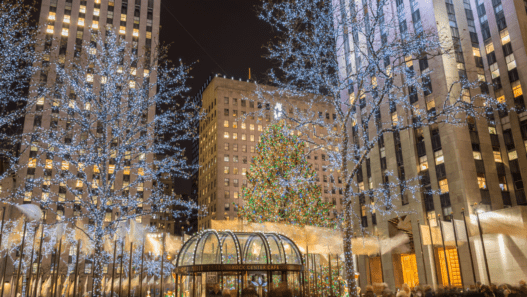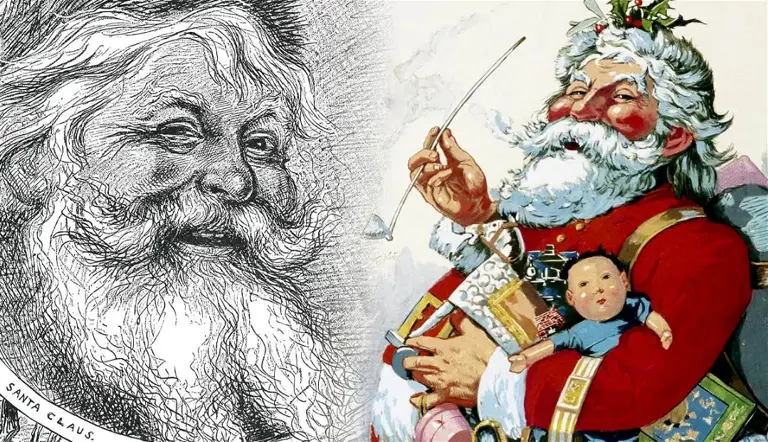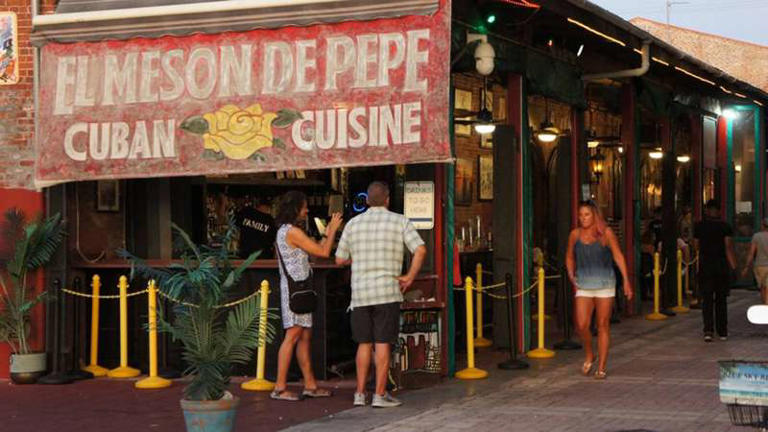It was a chilly December night when young Sarah heard a faint jingling outside her window. Peering out, she caught a glimpse of a red-suited figure disappearing into the darkness. “Could it be?” she whispered, her eyes wide with wonder. The legend of Santa Claus, the jolly gift-giver who has captured the hearts of children around the world, has captivated the imaginations of countless generations. But have you ever wondered where this beloved Christmas icon was born?
According to historical sources, Santa Claus, also known as St. Nicholas, was born around 280 A.D. in the ancient Lycian city of Patara, located on the Mediterranean coast of modern-day Turkey. Nicholas was born to wealthy Christian parents, who left him their entire estate upon their death. Rather than keeping the wealth for himself, the young Nicholas devoted his life to helping the poor and less fortunate. He became known for his acts of kindness and generosity, earning him the status of a beloved saint.
The Legend of St. Nicholas
St. Nicholas, the basis for the beloved Santa Claus figure, was renowned throughout history for his piety and kindness towards the less fortunate. One of the most well-known legends surrounding St. Nicholas tells the story of how he saved three poor sisters from being sold into slavery or prostitution by secretly providing them with dowries so they could be married. This act of selfless generosity earned St. Nicholas a reputation as a protector of children and sailors, and his feast day on December 6 was traditionally considered a lucky day for making large purchases or getting married.
Origins of Santa Claus
As the popularity of St. Nicholas grew, so too did the legends and folklore surrounding him. Over time, the story of the benevolent bishop evolved into the modern Santa Claus tradition, with St. Nicholas becoming associated with the gift-giving customs and holiday celebrations of Christmas. This transformation helped solidify St. Nicholas’s place as a central figure in Christmas folklore and holiday tales.
Sinter Klaas Comes to New York
The Santa Claus tradition continued to evolve as Dutch settlers brought the legend of Sinter Klaas to the American colonies in the 17th century. In New York, formerly known as New Amsterdam, the Dutch customs and stories of Sinter Klaas blended with local Christmas traditions, laying the groundwork for the modern American conception of Santa Claus.
Gift-giving and Christmas Traditions
The tradition of gift-giving associated with St. Nicholas has remained a central part of Santa Claus history and Christmas traditions around the world. From leaving treats in the shoes of well-behaved children to the modern practice of placing gifts under the tree, the spirit of St. Nicholas’s generosity continues to be celebrated and embraced by people of all ages during the holiday season.
‘Twas the Night Before Christmas
In 1822, Clement Clarke Moore, an Episcopal minister, wrote a famous Christmas poem for his daughters entitled “An Account of a Visit from St. Nicholas,” more commonly known as “‘Twas The Night Before Christmas.” Moore’s poem played a significant role in shaping the modern image of Santa Claus as a “right jolly old elf” with a portly figure and the supernatural ability to ascend chimneys to deliver presents to children on Christmas Eve. The poem’s vivid descriptions of Santa’s sleigh, flying reindeer, and the act of leaving gifts under the tree have become integral parts of Christmas folklore.
The poem’s famous opening lines, “Twas the night before Christmas, when all through the house, not a creature was stirring, not even a mouse,” have become ingrained in the collective consciousness as the quintessential introduction to Santa Claus’s annual visit. Moore’s work, which brought the legendary figure to life with its detailed accounts of his red suit, rosy cheeks, and jolly demeanor, has cemented the Santa Claus tradition as a beloved part of holiday tales and cultural beliefs around the world.
The poem’s enduring popularity and influence on the modern Santa Claus image have made it an integral part of Christmas traditions and legendary figures associated with the holiday season. From its humble beginnings as a private poem for Moore’s family, “‘Twas The Night Before Christmas” has become a beloved classic, shaping the way we envision and celebrate the magical arrival of Santa Claus each year.
The Evolution of Santa’s Image
Prior to the 20th century, Santa Claus was depicted in various ways, ranging from a tall, gaunt figure to a spooky-looking elf. It was not until the 19th century that the iconic image of Santa Claus we know today began to take shape. In 1881, political cartoonist Thomas Nast drew the first likeness of Santa that matches our modern conception, depicting him as a rotund, cheerful man with a full white beard, dressed in a bright red suit trimmed with white fur.
Thomas Nast’s Iconic Illustrations
Nast’s illustrations, which appeared in Harper’s Weekly, gave Santa his signature North Pole workshop, elves, and even Mrs. Claus, solidifying the Christmas folklore, north pole mythology, and Santa Claus history in the public’s imagination. These iconic depictions have become an integral part of Christmas traditions and the enduring legacy of this legendary figure.
Where was Santa Claus born?
Historical records indicate that St. Nicholas, the basis for the Santa Claus legend, was born around 280 A.D. in the ancient Lycian city of Patara, located on the Mediterranean coast of modern-day Turkey. Nicholas was born to wealthy Christian parents and inherited their entire estate upon their death.
St. Nicholas’s Birthplace in Patara
Rather than keeping the wealth for himself, Nicholas devoted his life to helping the poor and less fortunate, earning him a reputation for his acts of kindness and generosity. The city of Patara, where Nicholas was born, has long been revered as the birthplace of this beloved Christmas tradition and legendary figure.
The Life and Miracles of St. Nicholas
Over time, Nicholas’s popularity spread, and he became known as the protector of children and sailors. His feast day on December 6 was traditionally considered a lucky day for making large purchases or getting married. The stories and legends surrounding St. Nicholas’s life have contributed to the enduring appeal and cultural significance of the Santa Claus tradition during the Christmas season.
Santa Claus Around the World
While the Santa Claus we know today is primarily an American icon, similar gift-giving figures and Christmas traditions can be found in various cultures around the world. In Europe, characters like Christkind or Kris Kringle were believed to deliver presents to well-behaved children, often accompanied by St. Nicholas.
International Christmas Folklore
Scandinavian folklore tells of a jolly elf named Jultomten who would deliver gifts in a sleigh drawn by goats, while the English have their own Father Christmas tradition. In France, Père Noël is responsible for filling the shoes of children, and in Italy, the story of a witch called La Befana brings toys to Italian homes.
Traditions of Giving
These international gift-giving traditions and legendary figures, inspired by the legacy of St. Nicholas, demonstrate the widespread influence of Santa Claus and the shared Christmas folklore that unites cultures around the world.
The North Pole and Santa’s Workshop
In the modern American Christmas folklore, Santa Claus is believed to reside at the North Pole, where he maintains a magical workshop staffed by elves who help him prepare the gifts for children around the world. This whimsical holiday tale of Santa’s legendary figure and his North Pole mythology has become an integral part of Christmas traditions celebrated worldwide.
Santa’s Magical Sleigh and Reindeer
Santa’s mode of transportation is a sleigh led by a team of flying reindeer, including the famous Rudolph with his glowing red nose. This iconic image of Santa’s sleigh and his trusty reindeer team has been immortalized in numerous Christmas stories and holiday tales, captivating the imaginations of both young and old alike.
Tracking Santa’s Journey on Christmas Eve
On Christmas Eve, children around the world eagerly await the arrival of Santa Claus, tracking his journey as he delivers presents to households across the globe. This annual tradition of monitoring Santa’s progress has been facilitated by various technological advancements, including the NORAD Santa Tracker, which allows families to follow Santa’s flight path in real-time and even interact with him through interactive games and activities.
The Story of Rudolph the Red-Nosed Reindeer
While the eight original reindeer that pull Santa’s sleigh (Dasher, Dancer, Prancer, Vixen, Comet, Cupid, Donner, and Blitzen) have been part of Christmas folklore for centuries, Rudolph the Red-Nosed Reindeer is a more recent addition to the tradition. Rudolph was created in 1939 by Robert L. May, a copywriter at the Montgomery Ward department store, who wrote a Christmas-themed story-poem about a young reindeer with a glowing red nose who helps guide Santa’s sleigh on a foggy Christmas Eve.
The tale of Rudolph the Red-Nosed Reindeer has since become a beloved part of holiday tales and cultural beliefs surrounding Santa Claus and the North Pole. Rudolph’s story of being initially shunned by the other reindeer for his unusual physical trait, but then going on to save the day and earn the respect of his peers, has resonated with generations of children and adults alike.
The popularity of Rudolph the Red-Nosed Reindeer has only grown over the decades, with the character appearing in numerous Christmas movies, TV specials, books, and merchandise. The story’s message of acceptance, resilience, and the power of individuality has cemented Rudolph’s status as a legendary figure within the Santa Claus mythos and origins.
Today, Rudolph continues to be an integral part of the Christmas tradition, his glowing red nose guiding Santa’s sleigh and bringing joy to children around the world. The story of this special reindeer has become a timeless classic, a testament to the enduring power of holiday tales and the enduring appeal of legendary figures like Santa Claus.
The Church of Santa Claus in Myra
The city of Myra, located in modern-day Turkey, is home to the Church of St. Nicholas, which serves as an important site for the Santa Claus legend. After leaving his birthplace of Patara, St. Nicholas became the bishop of Myra, where he continued his charitable works and miracles.
The History and Restoration of the Church
The Church of St. Nicholas, originally built in the 4th century, has a rich and storied history. Over the centuries, the church has undergone numerous renovations and restorations, reflecting the enduring significance of the Santa Claus tradition and the legacy of St. Nicholas. In recent years, the church has undergone a major restoration project to preserve its architectural and cultural heritage, ensuring that this legendary figure’s legacy continues to be celebrated and honored by Christmas enthusiasts from around the world.
Exploring the Church’s Architecture and Frescoes
The Church of St. Nicholas in Myra is a remarkable example of Byzantine architecture, featuring intricate frescoes and stunning mosaics that depict the life and miracles of the beloved saint. Visitors to the church can marvel at the exquisite craftsmanship and attention to detail that have been preserved over the centuries, immersing themselves in the rich cultural history that has shaped the Santa Claus tradition.
The Church of St. Nicholas in Myra stands as a testament to the enduring legacy of the Santa Claus legend, offering a glimpse into the origins and traditions that have captured the hearts and imaginations of people around the world.
Santa Claus in Popular Culture
The figure of Santa Claus has become deeply embedded in popular culture, appearing in countless Christmas movies, stories, and other media. One of the most iconic depictions of Santa Claus in film is Kris Kringle from the 1947 classic “Miracle on 34th Street,” starring Edmund Gwenn in an Oscar-winning performance as the department store Santa who claims to be the real Santa Claus.
Beyond the silver screen, Santa Claus has also made a lasting impact on Christmas traditions and holiday tales. The beloved story of “Rudolph the Red-Nosed Reindeer,” first published in 1939, has become a cherished part of Christmas folklore, cementing Rudolph’s place as a legendary figure alongside the original eight reindeer.
Santa Claus’s influence extends far beyond the realm of fiction, with his image and persona being widely recognized and celebrated in popular culture. From iconic Coca-Cola advertisements to the annual Macy’s Thanksgiving Day Parade, the Santa Claus tradition has become an integral part of the holiday season for millions around the world.


























